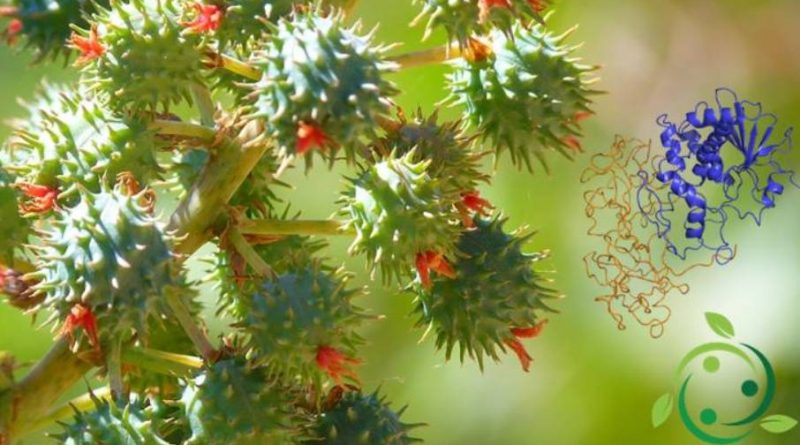Ricin
Ricin
Ricin is a toxic protein found in the seeds of the Ricinus communis plant.
It is one of the deadliest toxins that have ever been discovered, in fact a single ricin molecule can kill an entire cell. The castor plant also grows spontaneously in many areas of the world and is grown for the oil that is obtained from its bean-shaped seeds. The toxin is contained in the seeds, the deadly dose for humans is only 0.2 mg, a quantity that can be obtained from eight seeds.
Ricin, with a molecular weight of about 62 kDa, is a protein of the type II ribosome inactivating family (in English, Type 2 Ribosome Inactivating Proteins, abbreviated as RIP II).
Ricin is composed of two protein chains. One chain is cytotoxic and the other helps the toxin to enter the target cell.
When a person is poisoned, millions of ricin molecules bind to carbohydrates on the surface of cells and try to get the toxic portion in. Most toxins can not reach the cytoplasm, but only one is enough to kill the cell. A disulfide bridge is broken between the two chains and the cytotoxic chain enters the cytoplasm where it disables 1500 ribosomes per minute by killing the cell.
Ricin, in fact, eliminates a single adenine base at the end of the segment, and this is sufficient to deactivate the ribosome forever. This mechanism of action makes ricin a highly toxic protein as it can pass from one ribosome to another, destroying them one at a time until the protein synthesis (which is promoted by ribosomes) is completely blocked in the cell.
The ricin is therefore highly lethal but, if used appropriately, it can also have beneficial effects. Researchers have created a new type of therapeutic molecule called immunotoxin that combines the ability to recognize the target, typical of antibodies with the toxicity of the other portion. The antibody is chosen to selectively link to the cancer cells, thus bringing the toxin directly to the tumor cells that are to be destroyed.
Warning: The information reported is not medical advice and may not be accurate. The contents are for illustrative purposes only and do not replace medical advice.

